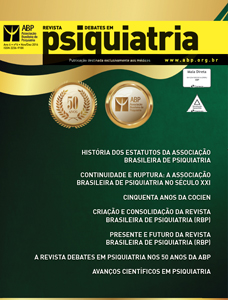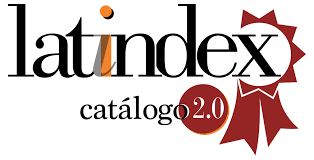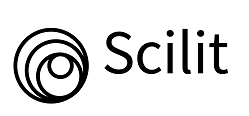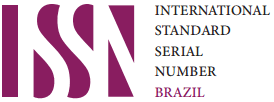Scientific advances in psychiatry
DOI:
https://doi.org/10.25118/2236-918X-6-6-7Keywords:
Psychiatry, treatment, biomarkers, translati onal, advancesAbstract
Recent scienti fi c advances in psychiatry have generated bett er outcomes in public health parameters. Translati onal approaches from bench to bedside have improved our knowledge of biomarkers and facilitated the identi fi cati on of new, improved therapies for mental disorders. Several techniques, including genomics and all the new ‘-omic’ generati on of study parameters have helped us understand the neurobiological bases of mental disorders. The inclusion of dimensional and biological variables to standard diagnosis with the advent of the 5th editi on of the Diagnosti c and Stati sti cal Manual of Mental Disorders (DSM-5) and the Research Domain Criteria (RDoC) may help provide customized treatments, associated with bett er course and prognosis.
Downloads
Metrics
References
Murray CJL, Lopez AD. The World Health Organizati on and the World Bank. Global health stati sti cs: a compendium of incidence, prevalenceand mortality esti mates for over 200 conditi ons. Cambridge: Harvard University; 1996.
Machado-Vieira R. Tracking the impact of translati onal research in psychiatry: state of the art and perspecti ves. J Transl Med. 2012;10:175.
Machado-Vieira R, Frey BN, Andreazza AC, Quevedo J. Translati onal research in bipolar disorders. Neural Plast. 2015;2015:576978. doi: 10.1155/2015/576978. Epub 2015 Jun 14.
Insel TR. Translati ng scienti fi c opportunity into public health impact: a strategic plan for research on mental illness. Arch Gen Psychiatry. 2009;66:128-33.
Regier DA, Narrow WE, Clarke DE, Kraemer HC, Kuramoto SJ, Kuhl EA, et al. DSM-5 fi eld trials in the United States and Canada, Part II: test-retest reliability of selected categorical diagnoses. Am J Psychiatry. 2013;170:59-70.
Cuthbert BN. Research domain criteria: toward future psychiatric nosologies. Dialogues Clin Neurosci. 2015;17:89-97.
Machado-Vieira R, Soares JC. [Treatmentresistant mood disorders]. Rev Bras Psiquiatr. 2007;29:S48-54.
Machado-Vieira R, Soeiro-De-Souza MG, Richards EM, Teixeira AL, Zarate CA Jr. Multi ple levels of impaired neural plasti city and cellular resilience in bipolar disorder: developing treatments using an integrated translati onal approach. World J Biol Psychiatry. 2014;15:84-95.
Niciu MJ, Mathews DC, Ionescu DF, Richards EM, Furey ML, Yuan P, et al. Biomarkers in mood disorders research: developing new and improved therapeuti cs. Rev Psiquiatr Clin. 2014;41:131-4.
Bernstein HG, Steiner J, Guest PC, Dobrowolny H, Bogerts B. Glial cells as key players in schizophrenia pathology: recent insights and concepts of therapy. Schizophr Res. 2015;161:4-18.
Benros ME, Nielsen PR, Nordentoft M, Eaton WW, Dalton SO, Mortensen PB. Autoimmune diseases and severe infecti ons as risk factors for schizophrenia: a 30-year populati on-based register study. Am J Psychiatry. 2011;168:1303-10.
Polderman TJ, Benyamin B, de Leeuw CA, Sullivan PF, van Bochoven A, Visscher PM, et al. Meta-analysis of the heritability of human traits based on fi ft y years of twin studies. Nat Genet. 2015;47:702-9.
Sullivan PF, Daly MJ, O’Donovan M. Geneti c architectures of psychiatric disorders: the emerging picture and its implicati ons. Nat Rev Genet. 2012;13:537-51.
Detre T, McDonald MC. Managed care and the future of psychiatry. Arch Gen Psychiatry. 1997;54:201-4.
Topol A, Zhu S, Tran N, Simone A, Fang G, Brennand KJ. Altered WNT Signaling in Human Induced Pluripotent Stem Cell Neural Progenitor Cells Derived from Four Schizophrenia Pati ents. Biol Psychiatry 2015;78:e29-34.
Falk A, Heine VM, Harwood AJ, Sullivan PF, Peitz M, Brüstle O, et al. Modeling psychiatric disorders: from genomic fi ndings to cellular phenotypes. Mol Psychiatry. 2016 Jun 21. doi: 10.1038/mp.2016.100. [Epub ahead of print]
Nishikawa S, Goldstein RA, Nierras CR. The promise of human induced pluripotent stem cells for research and therapy. Nat Rev Mol Cell Biol. 2008;9:725-9.
Alamo C, López-Muñoz F. New anti depressant drugs: beyond monoaminergic mechanisms. Curr Pharm Des. 2009;15:1559-62.
Machado-Vieira R, Henter ID, Zarate CA Jr. New targets for rapid anti depressant acti on. Prog Neurobiol. 2015 Dec 23. doi: 10.1016/j.pneurobio.2015.12.001. [Epub ahead of print]
Lewis PM, Thomson RH, Rosenfeld JV, Fitzgerald PB. Brain neuromodulati on techniques: a review. Neuroscienti st. 2016;22:406-21.
Bewernick B, Schlaepfer TE. Update on neuromodulati on for treatment-resistant depression. F1000Res. 2015 Dec 2;4. doi: 10.12688/f1000research.6633.1. eCollecti on 2015.
Fenoy AJ, Schulz P, Selvaraj S, Burrows C, Spiker D, Cao B, et al. Deep brain sti mulati on of the medial forebrain bundle: disti ncti ve responses in resistant depression. J Aff ect Disord. 2016;203:143-51.
Aparício LV, Guarienti F, Razza LB, Carvalho AF, Fregni F, Brunoni AR. A systemati c review on the acceptability and tolerability of transcranial direct current sti mulati on treatment in neuropsychiatry trials. Brain Sti mul. 2016 May 16. doi: 10.1016/j. brs.2016.05.004. [Epub ahead of print]
Litt man BH, Di Mario L, Plebani M, Marincola FM. What’s next in translati onal medicine? Clin Sci (Lond). 2007;112:217-27.
Downloads
Published
How to Cite
Issue
Section
License

This work is licensed under a Creative Commons Attribution-NonCommercial 4.0 International License.
Debates em Psiquiatria allows the author (s) to keep their copyrights unrestricted. Allows the author (s) to retain their publication rights without restriction. Authors should ensure that the article is an original work without fabrication, fraud or plagiarism; does not infringe any copyright or right of ownership of any third party. Authors should also ensure that each one complies with the authorship requirements as recommended by the ICMJE and understand that if the article or part of it is flawed or fraudulent, each author shares responsibility.
Attribution-NonCommercial 4.0 International (CC BY-NC 4.0) - Debates em Psiquiatria is governed by the licencse CC-By-NC
You are free to:
- Share — copy and redistribute the material in any medium or format
- Adapt — remix, transform, and build upon the material
The licensor cannot revoke these freedoms as long as you follow the license terms. Under the following terms:
- Attribution — You must give appropriate credit, provide a link to the license, and indicate if changes were made. You may do so in any reasonable manner, but not in any way that suggests the licensor endorses you or your use.
- NonCommercial — You may not use the material for commercial purposes.
No additional restrictions — You may not apply legal terms or technological measures that legally restrict others from doing anything the license permits.






























